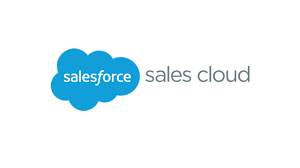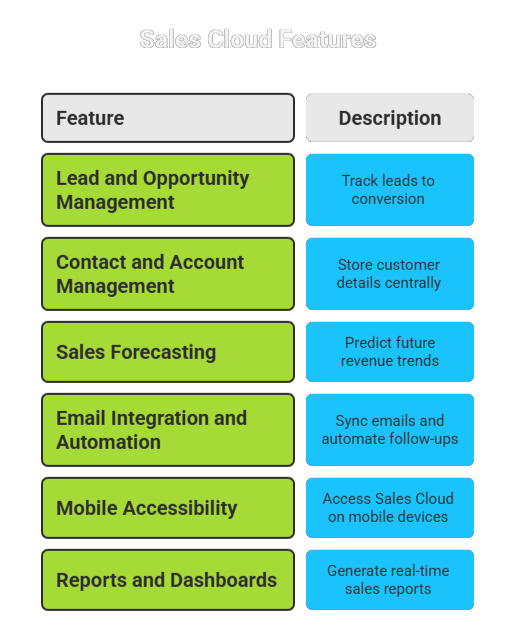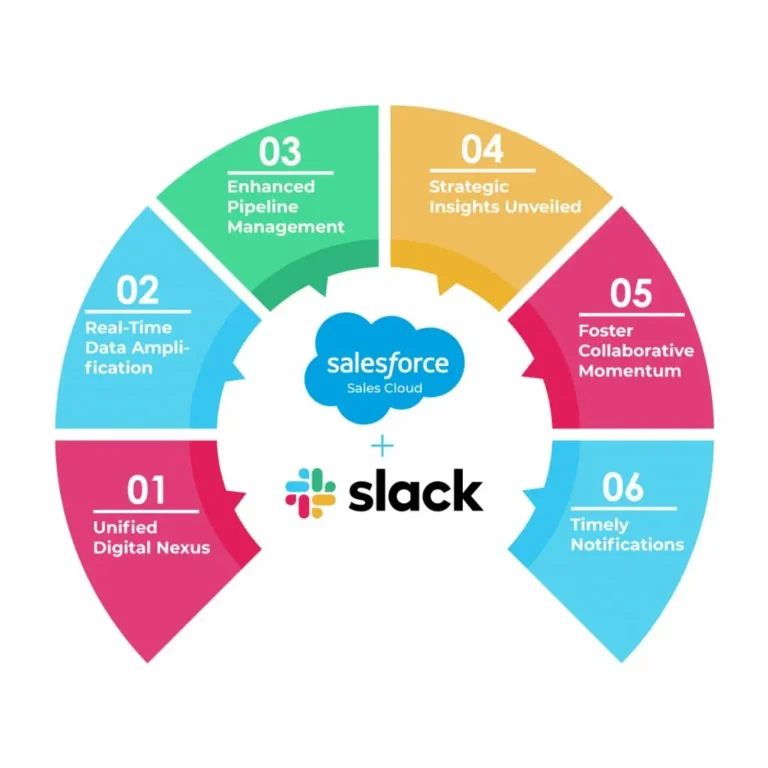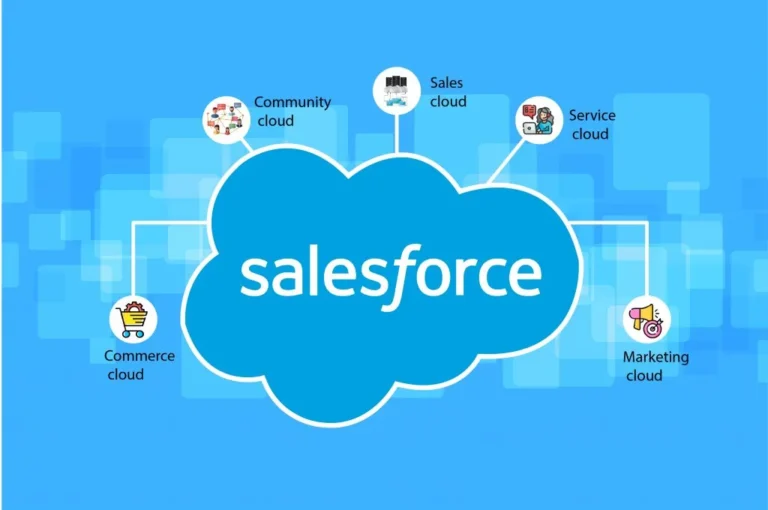
Introduction to Sales Cloud
Sales Cloud by Salesforce is a powerful customer relationship management (CRM) platform designed to help businesses efficiently manage leads, opportunities, and customer interactions. It streamlines sales processes, improves team collaboration, and provides valuable insights to boost revenue.
This guide covers the essential aspects of Sales Cloud, including its key features, benefits, and best practices for implementation.
Key Features of Sales Cloud
Sales Cloud offers a range of tools to enhance sales performance. Here are some of the most essential features:

1. Lead and Opportunity Management
- Track and manage leads from initial contact to conversion.
- Assign leads to sales reps based on criteria like territory or expertise.
- Monitor sales pipelines with visual dashboards.
2. Contact and Account Management
- Store customer details in a centralized database.
- Track interactions, purchases, and support history.
- Segment accounts for targeted marketing and sales strategies.
3. Sales Forecasting
- Predict future revenue using historical data and trends.
- Adjust forecasts based on real-time updates.
- Identify potential risks and opportunities early.
4. Email Integration and Automation
- Sync emails with Gmail or Outlook directly in Sales Cloud.
- Automate follow-ups and email sequences.
- Log email communications automatically.
5. Mobile Accessibility
- Access Sales Cloud on smartphones and tablets.
- Update records, check dashboards, and communicate on the go.
6. Reports and Dashboards
- Generate real-time reports on sales performance.
- Customize dashboards to track key metrics.
- Share insights with team members for better decision-making.
Benefits of Using Sales Cloud
Sales Cloud provides several advantages for businesses looking to improve their sales processes:
1. Improved Sales Productivity
- Automates repetitive tasks, allowing sales teams to focus on selling.
- Reduces manual data entry with AI-powered tools.
2. Better Customer Insights
- Stores all customer interactions in one place.
- Helps sales reps personalize their approach.
3. Enhanced Collaboration
- Teams can share notes, updates, and customer data in real time.
- Improves coordination between sales, marketing, and support teams.
4. Scalability
- Suitable for small businesses and large enterprises.
- Customizable to fit different sales models and industries.
5. Higher Revenue Growth
- Identifies upsell and cross-sell opportunities.
- Shortens sales cycles with efficient lead management.
Real-World Examples of Sales Cloud Implementations
1. Enterprise Tech Company Boosts Sales by 30%
A global software company used Sales Cloud to automate lead scoring and routing. By integrating AI-driven insights, their sales team prioritized high-value leads, resulting in a 30% increase in closed deals within six months.
2. Retail Chain Improves Customer Retention
A retail brand implemented Sales Cloud to track customer purchase history and preferences. Sales reps used this data to offer personalized discounts, leading to a 20% increase in repeat purchases.
3. Financial Services Firm Reduces Sales Cycle Time
A financial advisory firm streamlined its proposal process using Sales Cloud templates and e-signature integrations. This reduced their average deal closing time from 45 days to 28 days.
Sales Cloud Integrations
Sales Cloud works seamlessly with other business tools to enhance productivity.
1. Slack Integration
- Receive real-time deal notifications in Slack.
- Collaborate with teams without leaving the CRM.
- Learn how to integrate Salesforce with Slack.
2. Zoom Integration
- Schedule and join Zoom meetings directly from Sales Cloud.
- Log call summaries and next steps automatically.
3. ERP & Accounting Systems (e.g., SAP, QuickBooks)
- Sync customer invoices and payment data.
- Avoid manual data entry between systems.
4. Marketing Automation (e.g., Pardot, HubSpot)
- Track lead sources and campaign performance.
- Automate lead nurturing based on CRM data.
5. DocuSign for E-Signatures
- Send and sign contracts without leaving Sales Cloud.
- Speed up deal closures with digital approvals.
How to Set Up Sales Cloud
Setting up Sales Cloud correctly ensures maximum efficiency. Follow these steps:
1. Define Your Sales Process
- Map out lead qualification, follow-ups, and closing stages.
- Align Sales Cloud workflows with your business model.
2. Customize Fields and Objects
- Add or modify fields to capture relevant data.
- Create custom objects if needed.
3. Configure Automation Rules
- Set up workflows for lead assignment and follow-ups.
- Use Process Builder for advanced automation.
4. Integrate with Other Tools
- Connect Sales Cloud with marketing automation (e.g., Pardot).
- Sync with accounting or ERP systems for seamless operations.
5. Train Your Team
- Provide hands-on training for sales reps.
- Encourage adoption with best practices and tips.
Best Practices for Using Sales Cloud
To get the most out of Sales Cloud, follow these best practices:
1. Keep Data Clean and Updated
- Regularly review and remove duplicate records.
- Ensure all customer interactions are logged.
2. Use AI and Analytics
- Leverage Einstein AI for predictive insights.
- Analyze reports to refine sales strategies.
3. Optimize for Mobile Use
- Encourage reps to use the mobile app for quick updates.
- Ensure dashboards are mobile-friendly.
4. Monitor Performance Regularly
- Track KPIs like conversion rates and deal velocity.
- Adjust strategies based on performance trends.
Conclusion
Sales Cloud is a robust CRM solution that helps businesses streamline sales, improve customer relationships, and drive revenue growth. Companies can maximize their sales potential by leveraging its features, setting it up correctly, and following best practices.
This guide provides the essential information to get started, whether you’re new to Salesforce or looking to optimize Sales Cloud.


